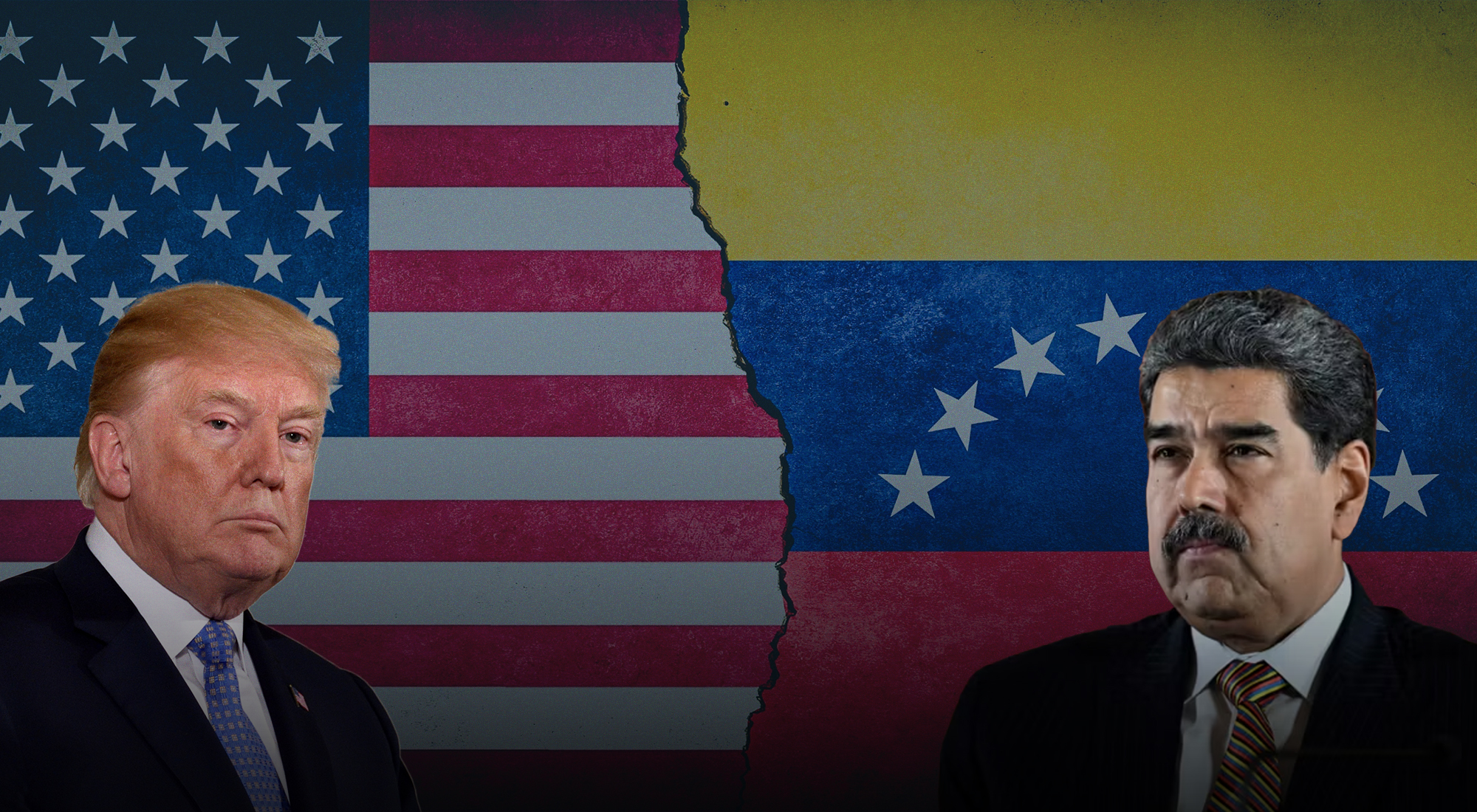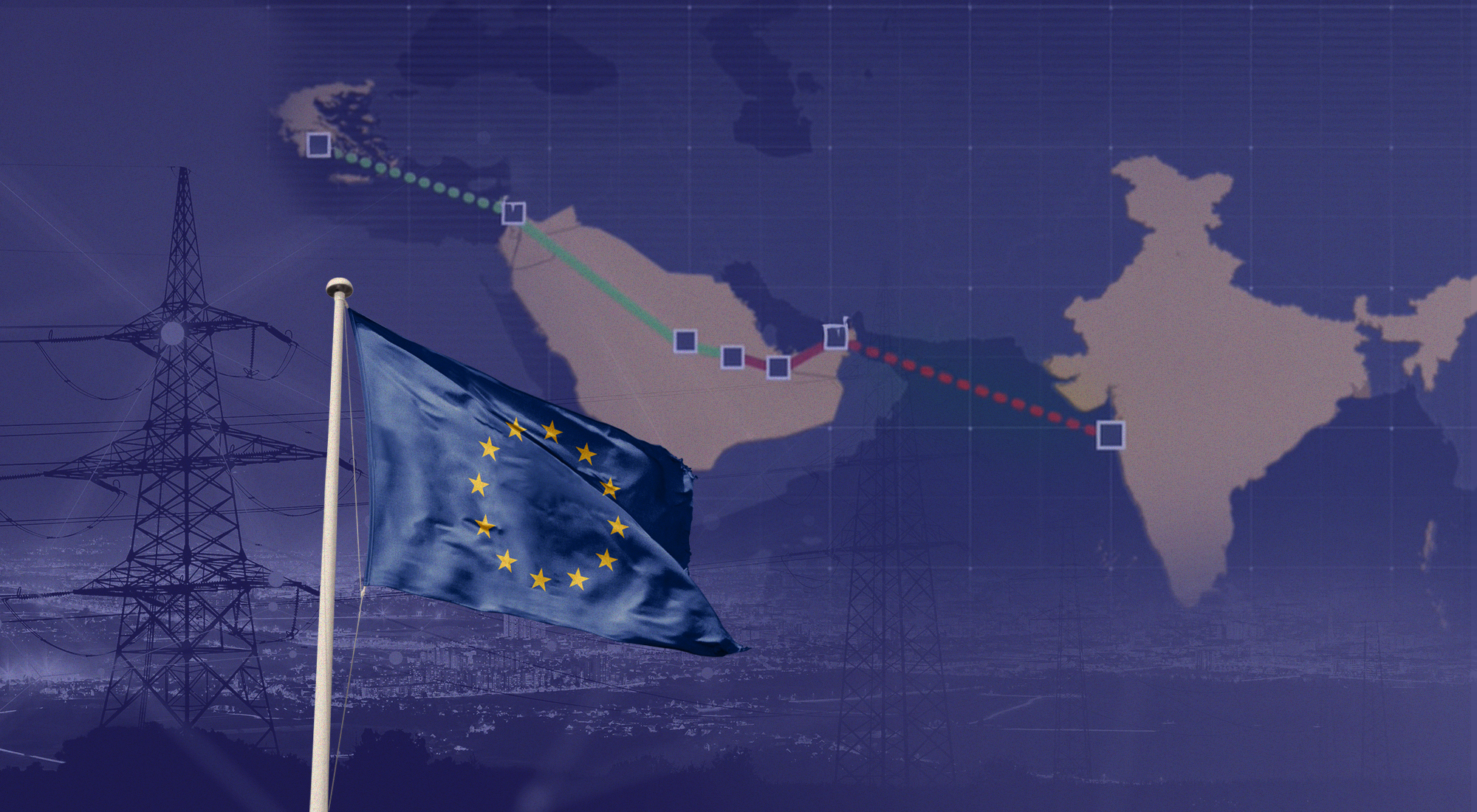“Your visit is truly significant. It builds on the
very special character of Vietnam-U.S. relations. You are the first U.S.
president to visit Vietnam,” said Vietnamese President Võ Văn Thưởng to Joe
Biden, his American counterpart, in the Presidential Palace’s iconic Yellow
Room in Hanoi.[1] “This is
truly a new page in the relationship between our two countries — an enduring,
stable long-term framework that opens up a vast space for further development
of the bond between us for decades to follow,” the Vietnamese leader added,
referring to the new Comprehensive
Strategic Partnership (CSP) deal between the two former nemesis. The signing of
the CSP effectively placed Washington at par with Hanoi’s historical ally,
Moscow, as well as with the Southeast Asian nation’s fellow communist regime in
Beijing, which played a crucial role in the birth of contemporary Vietnam.[2]
The remarkable shift in U.S.-Vietnam relations is an upshot of the spectacular
explosion in bilateral trade and investments over the past decade. Last year,
trade reached US$139
billion, placing Vietnam ahead of the United Kingdom among America’s top
trading partners.[3]
With the steady normalization of bilateral
ties, especially after the signing of a more modest strategic partnership deal
a decade earlier, the two sides have also explored defense and maritime
security cooperation. The signing of the CSP, therefore, marked a logical
conclusion to a decade-long mutual strategic courtship. While Vietnam has assiduously
diversified both its export markets and strategic partnerships, the U.S. has
been intent on winning over Asia’s new rising power. Following the signing of
their new pact, the two sides described each other as “critical
partners” in a “critical time”, reflecting a profound convergence in the two
countries’ strategic outlook. “I don’t
want to contain China,” declared Biden during his historic visit to Hanoi. “We’re
not trying to hurt China,” he added, emphasizing his determination and commitment
to “getting [America’s] relationship right” with China.[4]
The reality, however, is that the American leaders’ visit to
Vietnam, and the signing of the new strategic agreement, had almost everything
to do with the Asian superpower. While Hanoi is worried about the trajectory of
its maritime disputes with Beijing, the U.S. is eager on recruiting new
partners for its ‘integrated deterrence’ strategy against China. In a joint
statement between Vietnamese communist party chief Nguyen Phu Trong and Biden, the two
sides “underscored [our] unwavering support for the peaceful resolution of
[South China Sea] disputes in accordance with international law, without the threat
or use of force,” a clear reference to perceived threats from an increasingly
assertive China, which now boasts the world’s largest naval fleet. Biden and
the Vietnamese paramount leader underscored their shared commitment to “freedom
of navigation and overflight and unimpeded lawful commerce in the South China
Sea,” thus implicitly accusing Beijing of seeking to dominate one of the
world’s most important waterways.[5]
During the trip, the U.S. reportedly
offered major weapons systems, including modern fighter jets, to Vietnam. As if
that weren’t enough, Biden’s visit to Hanoi coincided with a gathering of top
executives of major American tech companies. With the West seeking to ‘de-risk’
from China, Vietnam has rapidly emerged as an alternative manufacturing hub,
including for increasingly high-end semiconductors and other next-generation
technologies.[6]
Upon closer examination, however, it’s clear that the Southeast Asian nation is
not interested in aligning with the West against China but instead deftly
exploiting great power rivalries to strengthen the foundations of its own
national power. While secretly negotiating major defense deals with Russia,[7] Vietnam
has also assiduously courted China’s goodwill through proactive party-to-party
diplomacy as a fellow communist nation.[8]
Dancing with Empires
Perhaps no nation on earth has had as
much experience with — and lots of success in — dealing with empires throughout
history. Although the origins of contemporary Vietnam can be traced back to
so-called “Vietic” peoples
emerging in the 1st millennium BCE, with the Red River Delta serving
as the cradle of Vietnam’s civilization, interactions with a much larger empire
to the north have been extremely crucial to the evolution and crystallization
of the Southeast Asian nation. [9] In the words of one historian, “[Imperial] China had for centuries served as a political, cultural,
linguistic model for Vietnam. Indeed, for large stretches of its history, parts
of Vietnam had been directly ruled by China; the rest of the country, lying
beyond direct Chinese sovereignty, Chinese emperors traditionally
regarded as ‘ours’.”[10]
Beginning
in the second century A.D., China’s Han Dynasty extended its southern imperial
perimeters as far as Huế in central Vietnam. The Chinese Tang Dynasty,
meanwhile, established the Protectorate of An Nam (Pacified South) to
consolidate its control over large parts of northern Vietnam. The upshot,
according to a leading Southeast Asia expert, was the establishment of a “new
class of local rulers, whose origins, official positions, and education linked
them to China.”[11] A
partial imperial retreat under China’s north-oriented Song Dynasty, however,
provided a golden opportunity for Vietnam to develop its own national identity
and distinct state institutions about a thousand years ago.
First
came the Lý Dynasty (1009–1225), which established its capital near today’s
Hanoi. Then came the Trần Dynasty (1225–1400) in the thirteenth century, which
extended the proto-Vietnamese state’s control over the coastal area of the Red
River Delta. Soon, however, a newly-consolidated Chinese empire began to
reassert its influence over Vietnam, culminating in a two-decade-long
occupation by the Ming Dynasty’s in the opening decades of the 15th
century. Under the Nguyen Dynasty, however, Vietnam went on the offensive, pushing
southward at the expense of the ancient Champa kingdom.[12]
Over centuries, Chinese emperors engaged in repeated punitive campaigns
whenever Vietnamese kingdoms began to reassert control over their own lands. Consequently,
Vietnam engaged in numerous border conflicts with China over the past half-millennium,
including a brutal land war in 1979.[13]
Nevertheless,
Vietnam also enjoyed varying periods of peaceful relations with its giant
northern neighbors. In fact, northern Vietnamese
polities were often “dependent upon a successful practice of mimicry
[of China],”[14]
a dynamic that was fully on display in the past century. In the opening decades
of the 20th century, various regimes in China, beginning with
Kuomintang forces and later under Maoist communists, provided vital assistance
to anti-colonial Vietnamese forces, who first defeated the French Empire, then
took on America in their bid to occupy the pro-Western regime in Saigon
(today’s Ho Chi Minh City).[15]
It didn’t long, however, before Vietnam and China found themselves at
loggerheads, as communists in Beijing and Hanoi began to sponsor competing
forces across Indochina, most dramatically in the case of Cambodia. Soon, Hanoi
and Beijing were at war again, including in the seas. A
skirmish over the Spratlys in 1988, for instance, led to the deaths of dozens
of Vietnamese soldiers, laying the foundation for decades-long bitter disputes
in the South China Sea.[16]
It was particularly at this point when strategic and military support from
Moscow proved existentially crucial for Vietnam. As a result of the turbulent
Cold War in Southeast Asia, the majority of Vietnam’s modern armaments are of
Soviet and Russian origin.[17]
Reform
and Reinvigoration
Following
the end of Indochina Wars, which coincided with the crumbling of the Soviet
Union, in the late-20th century, Vietnam once again mimicked its
northern neighbor by adopting a national policy of economic opening and
political reform (Đổi Mới), which closely resembled Deng Xiaoping’s pro-market reforms a decade
earlier. The upshot was a long ‘cold peace’ between Hanoi and Beijing, as both
communist regimes focused on economic development at home and, subsequently,
expanding market access across wealthy Western nations.[18]
Strategically,
post-Cold War Vietnam adopted a strictly non-aligned “Four No’s” national
security doctrine, which made it clear that there would be (i) no hosting of foreign military forces, (ii)
no military alliance with a foreign power, (iii) no alignment with one foreign
power against the other, and (iv) no offensive usage of coercive force as an
instrument of foreign policy. This didn’t mean, of course, that Hanoi would
tolerate China’s (real and perceived) intrusion into Vietnamese waters.
Instead, it meant a proactively pragmatic approach that combined engagement
with deterrence.
Hanoi retained “deliberately intimate political,
economic, and military ties with China, which it has worked harder than any
other Southeast Asian country to keep at an even keel,”[19]
while “enmesh[ing’
China in a web of bilateral ties in order to make China’s behavior more
predictable”, thus relying on a “series of agreements that stress comprehensive
cooperation through party-to-party, state-to-state and military-to-military
ties.”[20]
Meanwhile, Vietnam translated its post-war economic boom into growing economic
muscle, with the Southeast Asian nation becoming the world’s eighth largest arms importer in 2016,
thanks to the massive purchase[21]of
state-of-the-art Russian weaponry, including modern fighter jets and
submarines.
Vietnam also actively invited foreign energy companies
from Russia, India, and the West to invest in its offshore hydrocarbon fields,
including in the South China Sea, in order to ward off Chinese harassment in
the contested areas. To avoid overdependence on Russia, Vietnam also pursued
expanding maritime security cooperation with India, Japan and Europe. Vietnam’s ‘omni-balancing’ strategy,[22]
however, reached its apogee when Hanoi sought membership in the U.S.-led Comprehensive
and Progressive Agreement for Trans-Pacific Partnership (CPTPP).[23] Although the Trump
administration withdrew from the TPP, bilateral trade deals expanded by leaps
and bounds in recent years. Crucially, the Trump administration also doubled
down on defense cooperation, most notably identifying Vietnam as a “cooperative
maritime partner”[24]
in its National Security Strategy and, even more dramatically, deploying an aircraft carrier, USS Carl Vinson, to a
Vietnamese port for the first time in four decades.
Initially, the Biden administration adopted a conflicting
approach toward Vietnam. It dispatched several cabinet members, including
Vice-President Kamala Harris and Secretary of Defense Lloyd Austin, during its
first year in office to Hanoi in order to further deepen strategic ties. At
times, Washington openly hailed Vietnam as a regional role model for other
Southeast Asian states by emphasizing Hanoi’s pushback against China in the
South China Sea. However, the Biden administration risked alienating Hanoi when
it placed democracy promotion and human rights at the center of its foreign
policy rhetoric, notably disinviting Vietnam from its annual “Summit for
Democracy” in Washington, DC. Bilateral relations also came under strain when
the U.S. orchestrated Western sanctions on Russia in 2022, thus undermining
Vietnam’s ability to maintain robust trade and defense exchanges with the
Eurasian power in the wake of the Ukraine conflict.[25]
Through
two high-level visits to Vietnam this year, beginning with U.S. Secretary of
State Antony Blinken’s trip just months before Biden’s, Washington has sought
to maintain a positive momentum in bilateral relations. In reality, however,
Vietnam has made it clear that while it welcomes an increasingly comprehensive
and cooperative relationship with the U.S., it’s not willing to take sides between
rival superpowers. This explains why Vietnamese party chief Nguyen Phu
Trong became the first foreign leader to visit Xi Jinping immediately after the
latter’s securing of a historic third term as China’s president in late 2022.
Crucially, an anti-corruption initiative has sidelined more liberal elements
within Hanoi’s top leadership to the benefit of more conservative elements, who
are deeply concerned about a West-instigated ‘color revolution’ in an
increasingly globalized Vietnam.[26]
Perhaps even more critical is the fact that Vietnam relies heavily on Chinese inputs and investments for its exports to the West, thus the multidimensional importance of keeping bilateral relations as stable as possible.[27] Wary of either undue influence by the West or unnecessary confrontation with China, and not to mention the challenges of cooperating with an increasingly isolated Russia, the Southeast Asian nation has proactively pursued balanced relations with all major powers with the ultimate aim of enhancing its own strategic autonomy and defensive capabilities. By all indications, a dynamic Vietnam is fast emerging as a new powerhouse in the Indo-Pacific, largely thanks to its adept and proactive optimization of a diverse network of strategic partnerships, including with competing superpowers.
[1] See full transcription of exchanges, https://www.whitehouse.gov/briefing-room/speeches-remarks/2023/09/11/remarks-by-president-biden-and-president-vo-van-thuong-of-vietnam-at-a-state-luncheon/.
[2] Hannah Beech, “Vietnam Chases Secret Russian Arms Deal, Even as It
Deepens U.S. Ties,” The New York Times, September 9, 2023.
[3] Brendan Murray, “Vietnam Boots UK Out of Top
Seven US Trading Partners,” Bloomberg, December 19, 2022, https://www.bloomberg.com/news/newsletters/2022-12-19/supply-chain-latest-vietnam-tops-uk-in-top-7-us-trade-partners.
[4] Alexander Ward, “‘I don’t want to contain China,’ Biden says
in Beijing’s backyard,” Politico, September 10, 2023. https://www.politico.com/news/2023/09/10/biden-china-g20-00114892.
[5] See White House press release, https://www.whitehouse.gov/briefing-room/statements-releases/2023/09/11/joint-leaders-statement-elevating-united-states-vietnam-relations-to-a-comprehensive-strategic-partnership/.
[6] “How America is failing to break up with
China,” The Economist, August 8, 2023, https://bitly.ws/XNqG.
[7] Hanna Beech, op. cit.
[8] Cyril Ip, “Vietnam’s Communist Party chief to be first foreign leader to
visit China after 20th congress,” South China Morning Post, October 25,
2022, https://bitly.ws/XNrt.
[9] Nam Kim, Origins of Ancient
Vietnam. (Oxford: Oxford University Press, 2018).
[10] Julia Lovell, Maoism: A
Global History (New York: Knopf Doubleday Publishing Group, 2019).
[11] John Sidel, Republicanism,
Communism, Islam Cosmopolitan Origins of
Revolution in Southeast Asia, (Ithaca,
New York: Cornell University
Press: 2021).
[12] Li Tana,
“An Alternative Vietnam? The Nguyen Kingdom in the Seventeenth and Eighteenth
Centuries.” Journal of
Southeast Asian Studies 29,
no. 1 (1998): 111-21. http://www.jstor.org/stable/20072011.
[13] Carlyle Thayer, “Vietnam’s
Strategy of ‘Cooperating and Struggling’ with China over Maritime Disputes in
the South China Sea.” Journal of Asian Security and International Affairs, July
3, 2016, https://doi.org/10.1177/2347797016645453.
[14] Gerard Sasges, “H-France
Review.” H-France Review 17 no. 194 (2017), https://www.h-france.net/vol17reviews/vol17no194sasges.pdf.
[15] Julia Lovell, op. cit.
[16] Evelyn Goh, “Meeting the China
Challenge: The U.S. in Southeast Asian Regional Security Strategies,” East
West Center, 2005,
https://www.eastwestcenter.org/system/tdf/private/PS016.pdf?file=1&type=node&id=32053.
[17] Carlyle Thayer, op. cit.
[18] Bill Hayton, The Invention of China, (New Haven: Yale
University Press, 2020).
[19] Evelyn Goh, “Southeast Asian
Strategies toward the Great Powers: Still Hedging after All These Years?,” The
Asan Forum, February 22, 2016. https://theasanforum.org/southeast-asian-strategies-toward-the-great-powers-still-hedging-after-all-these-years/.
[20] Carlyle Thayer, op. cit.
[21] Luke Hunt, “Russia Touts Arms
Across Southeast Asia,” VOA, January 18, 2020.
https://www.voanews.com/a/east-asia-pacific_russia-touts-arms-across-southeast-asia/6182779.html.
[22] Steven David, “Explaining Third
World Alignment.” World Politics. 43 no. 2 (1991): 233-256. https://www.jstor.org/stable/2010472?seq=1.
[23] Dezan Shira, “TPP Revived as
CPTPP: What it means for Vietnam,” Vietnam Briefing, November 22, 2017, https://www.vietnam-briefing.com/news/tpp-revived-cptpp-means-vietnam.html/.
[24] See Department of Defense document, https://media.defense.gov/2019/Jul/01/2002152311/-1/-1/1/DEPARTMENT-OF-DEFENSE-INDO-PACIFIC-STRATEGY-REPORT-2019.PDF.
[25] Hanna Beech, op. cit.
[26] Nguyen Khac Giang, ““Vietnam’s
Anti-corruption Campaign: Economic and Political Impacts,” Institute for Southeast Asian Studies
(ISEAS), 2023.
[27] The
Economist (2023).








